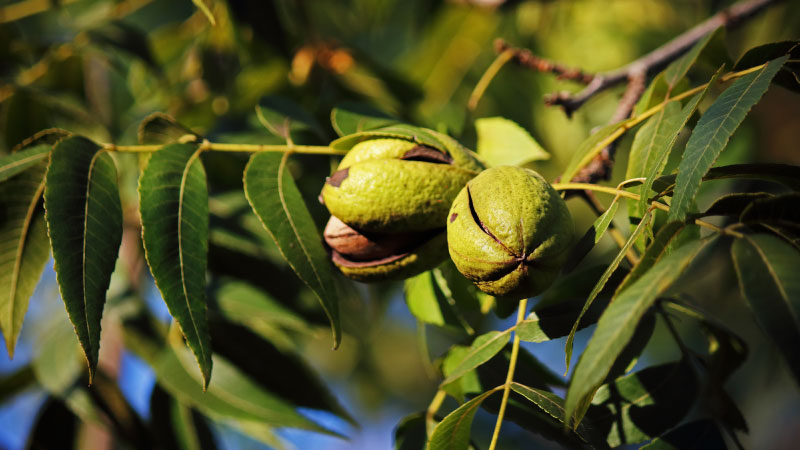How to Match Drip Irrigation to Improve Berry Water Management
When we make new plantings of all berry crops, it is necessary for plant survival and growth to have frequent water applications close to each plant stem. Very often I have seen drip irrigation systems installed on new perennial berry plantings after planting, rather than before planting. By installing row lines on the soil surface before planting, plants can be set within six inches of visible emitters or the fused in-line emitters that are visible, such as those commonly spaced two feet or four feet apart in heavy wall drip lines that last for many years.
When drip lines are installed after planting, often growers find that many emitters are not close to the young plant stems and roots. Unless you go back and add an emitter within six inches (closer is even better) of the new plant, it dies or is severely stunted (stopping future growth) that first summer unless frequent rains occur all summer long. With the high cost of nursery stock and labor, common sense requires we do it right the first time!
Lay out the field, install the row drip lines, mark each planting hole center, such as with field marking paint. These ready-to-use, pressurized soil marking paint cans are available in bright orange, white, or yellow paint color. At planting, move the drip line over just out of the way and make the planting holes centered at each visible paint mark. When finished planting and applying a light mulch, re-position the drip line by each plant. You will be rewarded with drip irrigation soil wetting that is delivered precisely at each plant so they all will survive and make rapid growth.
Tips for Young Plants
The more often you operate the drip irrigation system, the faster your young plants will grow! Research has shown that the ideal watering frequency for young plants is once a day when no rain occurs! Unless you automate the operation to a clock/timer electronic control system, most of us cannot manage daily irrigations, thus we can lose many young plants in their first summer.
Knowing your soil’s water holding capacity is a guide to how often to operate and for how long each time. For example, young plants on sandy soils that have very low water-holding capacity, need water each day when rains do not occur! An hour of drip irrigation each day will provide for young, mulched, plant survival and growth the first summer if rains are scarce on sandy land.
On heavier soil types, such as our silt loam soil here with good water-holding capacity due to higher organic matter than sandy soils, we get good plant survival and growth by watering for two hours per cycle every third day in dry weather on mulched blueberry, blackberry, and raspberry plantings.
These are just general observations over the years; growers should really fine-tune their irrigation management by working with irrigation experts available through and with their local Cooperative Extension Agents. Automating your drip irrigation system is highly recommended. Supplies, expertise/information needed to do so also is available from irrigation specialists and most irrigation dealers!
Water Management Strategies on Older Plants
How about our watering management on mature, larger and older plantings of blackberries, raspberries, and blueberries? It seems like many of us are still using the single drip irrigation line on each row of mature plants.
I’m also fussing at myself here; we “got by” this way, but in hindsight, how much potential growth, berry size and plant yields did we lose over the years? Why did I not spend more “noggin-scratching” common-sense thinking time about better watering for larger, older plantings? Why not stop to consider the size and diameter of the root systems of mature plantings and how best to reach with water more of those roots?
Thankfully, it is never too late to make amends in this case! For example, you can simply go back and add a second drip-line on the other side of each row, about 12 inches from the plant centers, and move the earlier line out to about 12 inches on the other side of the plant centers. Then continue to supply water for the same period of time each cycle as before.
At first glance, you are doubling the amount of water applied, since two lines per plant applies twice the water volume compared to one line per row, so it’s tempting to operate only half as long per watering cycle. However, since the lines are spread now to cover most, if not all, of the mature plants’ root diameter, you are now providing the same amount of water to most of the roots instead of just near the crowns.
Benefits Abound with Better Watering
You would now be more nearly duplicating the even-falling, beneficial effect of rain to each plant! We know that root systems’ diameter generally extends to or even beyond the foliage diameter of mature plants of blueberries and cane berries; indeed, often there are root sucker plants coming up from berry roots “out there” in our row middles!
In times of water stress on your berry plantings, especially at berry development and sizing on through harvest, improve your water distribution and frequency to roots! Providing water to more of the total root diameter will result in increased nutrients uptake, less plant stress, better new growth of young stems for your future crops and larger berry size!
Pick-your-own customers just will not pick little berries, it takes too long to fill their containers! If you’re harvesting for local farmers markets or for retail or wholesale accounts, little berries take too long to pick! Better water management, along with the other crop needs, certainly deserves its share of your good thinking and doing!










